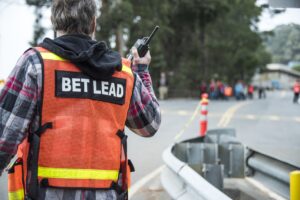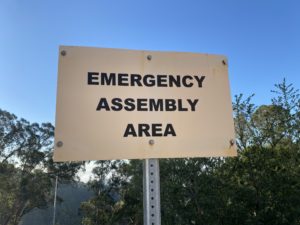
Save the date for the 2025 Great ShakeOut on 10/16/25
Add a reminder to your calendar.
When you receive the LabAlert:
- Drop to your hands and knees. This position prevents you from being knocked over and allows you to move if necessary.
- Cover your head and neck under a sturdy piece of furniture such as a desk or table. If no shelter is nearby, cover your head and neck with your arms and crouch near an interior wall, away from windows or items that could fall.
- Hold On to your shelter until the shaking stops. Be prepared for movement; if your shelter shifts, move with it.
Evacuate
- Calmly exit the building using the nearest safe route.
- Proceed to the closest Evacuation Assembly Area (EAA).
- Stay clear of traffic lanes and emergency response routes.
Check In for Lab Accountability at the EAA:
- Scan the posted QR code to assist with sitewide personnel accountability.
- Return to work after you have checked in.
- Email emergencymanagement@lbl.gov with any comments, observations, or feedback about the evacuation or accountability process. Your input helps improve future preparedness.
Some EAA locations have been updated or added, please use the below map to see the current locations and ID numbers of EAAs. Learn more about the EAA update initiative here.





